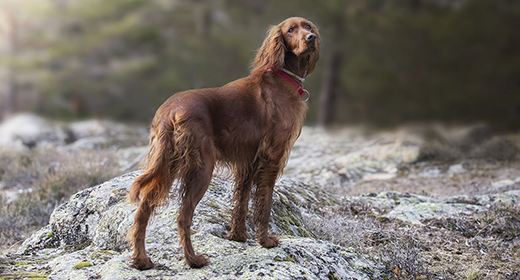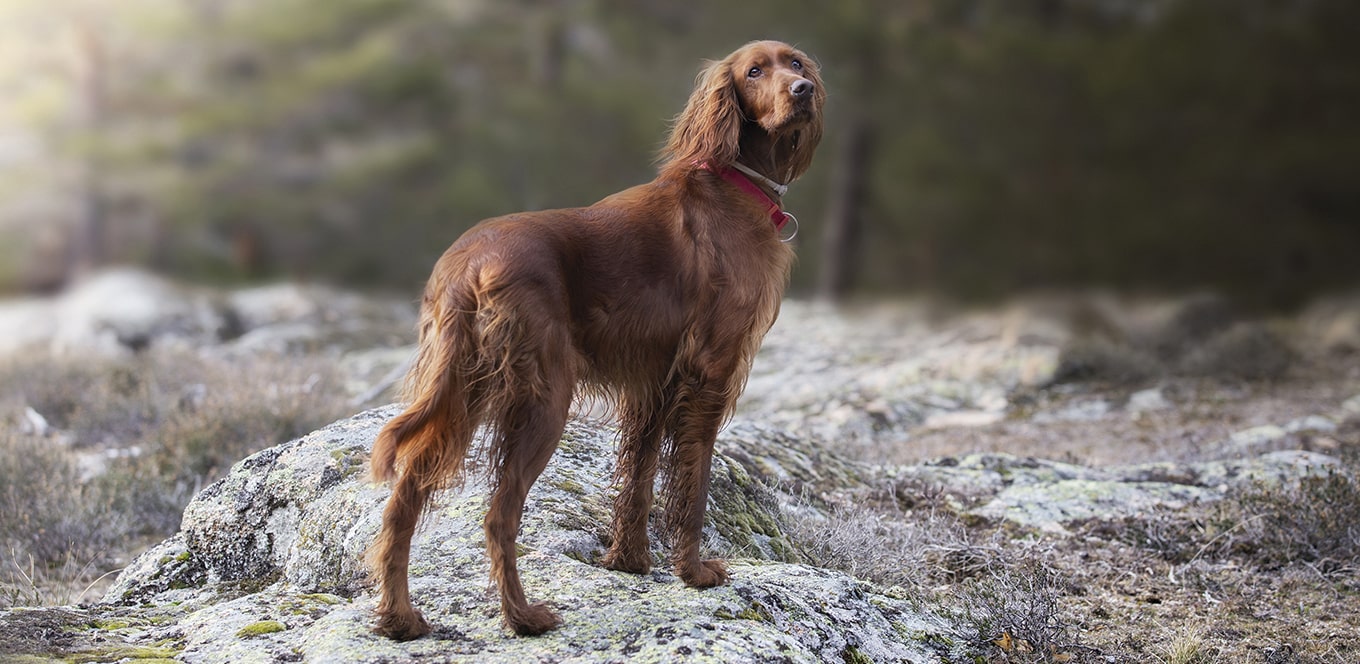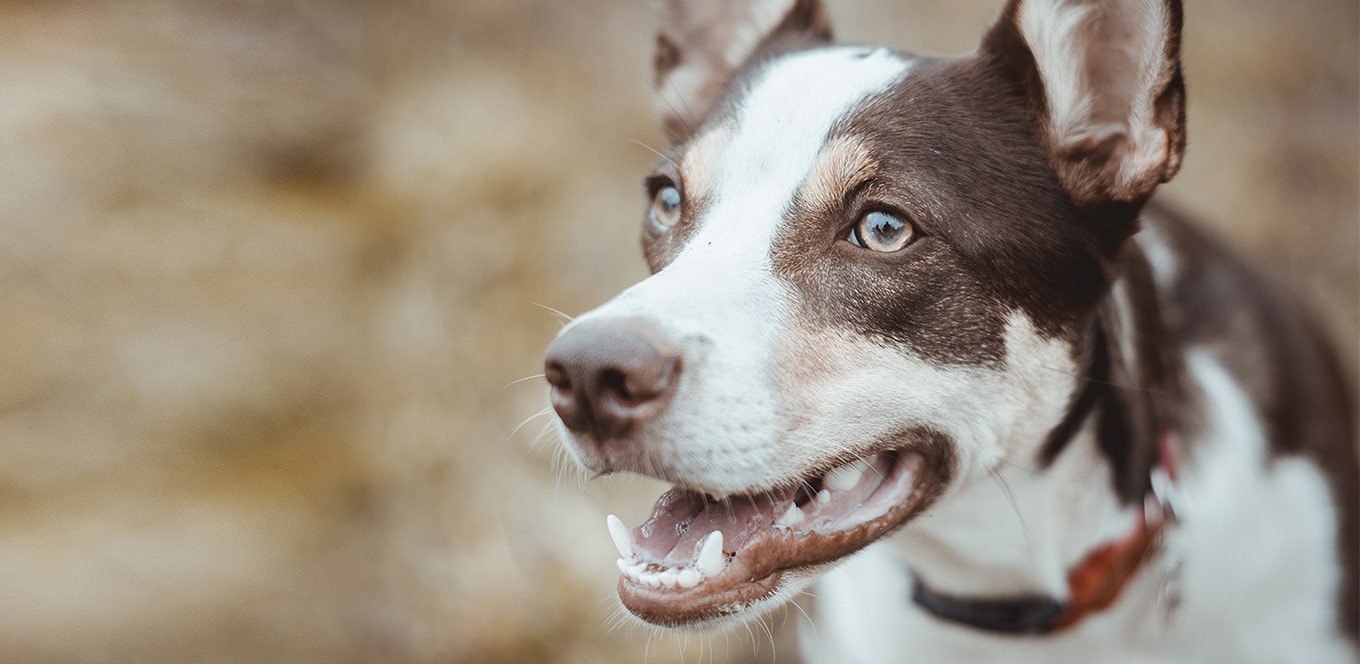

Many factors influence the overall health of your dog’s skin and coat: His diet and grooming schedule, the presence of parasites and seasonal changes can all play a role. Whether your dog is prone to skin issues or you want to ensure your pup’s health for years to come, you’ll need to keep a few key things in mind.
Regular veterinary checkups will ensure that your dog is disease- and parasite-free. Flea-bite allergy and external parasites, such as mange, are primary causes of hair loss and skin problems.
In addition to scheduling checkups, check your dog’s hair and skin at least once a week for signs of fleas (flea dirt or bites), mange or other skin conditions, and hair loss.
If your dog’s skin seems thick or scaly or lacks elasticity, or if you notice hair loss, these signs might indicate a nutritional deficiency. Check with your veterinarian, and try feeding him a premium food. It will usually take between six and eight weeks after a diet change to see results. If your pet continues to scratch and chew his skin, consult a veterinarian.
When looking for a dog food that will promote good skin and coat health, keep the following in mind:
What's the best thing you can do for your dog’s skin and coat health? Feed a high-quality food packed with protein, such as IAMS™ ProActive Health™ Adult MiniChunks. Dogs are best fed as carnivores: They need protein and thrive on diets rich in animal-based protein sources. Additionally, their hair is actually 95% protein! Although coat growth varies by breed, the combined growth of all the hair can add up to 100 feet per day in some dogs. This means that nearly 30% of the animal’s daily protein requirement is used just for coat growth during some seasons.
Premium pet foods are carefully formulated to be complete and balanced, which means the food includes all of the nutrients your pet needs. Ingredients in premium foods are highly digestible so your dog's body uses the nutrients efficiently. Less costly foods might contain lower-quality proteins. Though a bag of premium food may cost a bit more than other brands, you might be able to feed less, which minimizes the cost difference.
It’s easy to spot a healthy-looking dog: He has a gleam in his eye, a bounce in his step and a glossy, healthy coat. That glow is a reflection of your dog’s overall health and a good gauge of what’s going on inside and outside.
Regular grooming helps take care of the “outside” by removing loose hair, dirt and mats, and distributing skin oils. Grooming lets you check your pet closely, catching any skin problems early. Plus, your dog will love the attention!
As dogs age, their skin might become more sensitive. Select a mild dog shampoo for your older dog. Shampoos made from coconut or palm oils are the mildest. Unusual or “doggy” odors can signal disease, so if odors persist, contact your veterinarian. Do not use human shampoos because they are often too harsh for a dog’s skin.
When bathing your dog, be sure to rinse him thoroughly. Residue left on the skin can be irritating. You might want to follow the shampoo with a hair conditioner to control static electricity and add extra body or sheen.
During the summer, pay close attention to your dog’s skin and coat. Many dogs shed a winter coat and others face flea problems, so it’s a good time to evaluate your dog’s skin and coat condition to nip any problems in the bud.
Attention to your dog's coat and skin from the inside out will produce a healthy, lively dog that is a joy to look at — and a pleasure to live with — every day!




Bathing your puppy is an important part of good pet care. Whether you're a newbie or a seasoned pet parent, it's crucial to provide your pup with ample and frequent baths to keep them looking and feeling healthy. More than just for appearances, though, regular baths are essential for maintaining proper hygiene and skin health – like how we need showers! To help ensure your pup looks and feels its best, here are our top tips for bathing your furry friend.
When you get a new puppy, one of the first questions that may come to mind is, 'When can puppies take a bath for the first time?' You shouldn't bathe your puppy until they are around eight weeks old. Even then, the process should be approached with care and gentleness. After their initial bath, you typically only need to do so again when necessary.
Before you start, ensure you have everything you need for your puppy's first bath. This includes a place to bathe your puppy, towels, shampoo and conditioner for long-furred dogs, a brush or comb and a hair dryer with a relaxed setting.
To ensure your puppy is comfortable during the bath:
Once your puppy is comfortable with the water, it's time to wash them.
If it's your first time bathing a puppy, don't fret - we've got you covered with this step-by-step guide.
Determine the right shampoo and conditioner for your pup before even getting them wet. All of this comes down to what type of fur they have. Get professional advice from your vet first to know which products would be best for your puppy.
Pups with short coats need more oil to add moisture, whereas long-coated dogs require moisturizers to maintain coat health.
We recommend bathing puppies as young as eight weeks old so that it becomes a part of their routine. But don't overwhelm them; a puppy's first visit shouldn't include baths. Instead, let this serve as an introduction and show them that there is nothing to be scared of.
Allow the puppy to roam free and get them used to being in a tub by slowly running a brush over their fur. Be sure to give lots of treats, swaddling, and cuddles to make them feel safe.
To get started with the bathing and grooming process, lightly brush or comb their coat to remove any dirt. Also, doing this will help eliminate any knots or tangles in their fur before bathing them.
Get the water to a comfortable temperature; it should be warm but not hot. Puppies have more sensitive skin than we do, so they will feel the heat much faster.
Before you start, lay out everything you will need and ensure no one in the house uses any water while you're bathing the puppy. Sudden temperature changes can be dangerous for puppies; hence, taking precautions is essential.
To avoid skin irritation, forego cleansing products when they are young and use lukewarm water instead. The temperature must be comfortable for your pup, as hot water can harm dogs.
A warm wash rag is all you need to use on a puppy that is three or four-months old. Dogs' body temperatures are higher than ours, so they experience temperature differently than we do.
For puppies older than three or four months, you can bathe them in a bathtub or shower. Handling your puppy can be delicate, especially when it's time for their bath. If you have a particular bathtub or shower specifically for puppies, use that--it'll make things much more manageable. Be sure to place them on a non-slip surface inside the tub or shower, so they don't become overwhelmed and frightened.
It's time to introduce shampoo and conditioner to your puppy once they are at least three months old.
Only purchase shampoos and conditioners for dogs that are pH balanced to avoid health hazards. We recommend plant-based products with no chemical additives to maintain a healthy coat and skin. Also, please don't go for the cheapest product, as it might not be practical or safe.
Before using the puppy shampoo, dilute it with equal water. Apply it all over their body, being mindful to avoid contact with sensitive areas like eyes and ears.
Remember that bathing a puppy is like washing a tiny human baby. They won't be used to the feels and may not take it well at first.
If you want to avoid scratches, use the balls of your fingers and massage the shampoo into the coat -- this will help remove dirt and dust. Plus, your puppy will love it!
Rinse your puppy's fur thoroughly to remove all traces of shampoo after bathing. You should repeat the process a few times for best results.
Keep your dog's skin clean by getting between the folds with baby wipes or a damp cloth to remove all soap. Once you are done, be sure to dry their skin thoroughly.
Gently rub your puppy with a towel to remove the excess water, then place them on the floor in a safe area.
Until they are no longer dripping, you can keep them towel dry. Have someone help you hold onto them or sit down on your knee to ensure they feel secure.
Next, you will want to use a hairdryer on your pup's coat. It's best to use a diffuser to spread the heat evenly, and ensure it's only set on low or cool.
When you use a hairdryer on your puppies, go slow to get them used to the sensation and noise. Avoid blowing air directly into their face or ears. Try to get them as dry as possible, and for long-coated breeds, frequently stop to brush or comb through their coat, so it doesn't get tangled.
Your dog's health is crucial, so you should bathe them once a month. Over time, their skin and fur become oily and dirty from environmental factors and everyday activities. Including baths in your pet care routine will keep them happy and healthy.
For a puppy, it's best to stick with lukewarm water, mild soap, and gentle massages. Remember to follow up with regular brushing, which can help keep their coat soft and shiny. Minimal shampooing is recommended, as bathing too often will lead to dry skin.
These steps should have you on your way to a happy and healthy puppy. With regular baths, you can help ensure your pup is always looking and feeling its best. It may take time for them to get used to it but bathing your puppy can be an enjoyable experience if done correctly. Have fun with it!